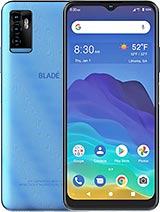Repair A Phone Screen with Nail Polish By Tech Minded
If you're subscribed to my channel, then you've seen the videos I've done in the past, dealing with phone repair, and I've mainly focused on screen repair, because it's a problem that a lot of people have, and I'm back again with another homegrown repair. I, guess today's repair uses something that just about anybody has around their home. As you can see, this is a severely cracked screen. I have accentuated the cracks just a bit with a razor blade, so we can really see how this works, but there is started with a little divot in the middle there and if I can get the camera to focus, be able to see that the cracks branch out from there, and they're rather deep. So what I've done is I've cleaned this up with a little of alcohol to try to get all the remnants of the glass and the dust out of the cracks and what I'm going to do today is go ahead and try to fill it in our filler material for today, I know as you've seen in the past, we've used superglue, and we've tried epoxy, which has been rather popular, and we've also used a window repair kit, but now I want to use something: that's more common around the household and for that I've chosen, clear, fingernail, polish, it's just a clear, topcoat, I, don't know much about fingernail polish, but I have a pretty good idea that this just might work, so we're gonna, basically apply it to the cracks and let it dry, and then we're going to do the same thing that we did in the past videos and scrape off the excess, with a razor blade to make this nice and flat. So without dragging this out, let's go ahead and get started.
Here's my phone! This is my working phone. As you can see, it's the phone that I use every day, so I really need this to work, so I'm, just gonna start with this cleaned screen, and we're going to paint this down in the cracks as much as possible and don't worry about using too much any excess is going to be scraped off once it drives anyway, and really try to use the tip of the brush to push it down in those cracks, because we want to cover up any little of air or dust that was in those cracks. As you can see, it's already starting to hide the cracks really well compared to what it was now. There are two little bubbles under the screen that I can't fix with this method. That'll be covered in another video, but mainly what we're focusing on here is the cracks in the screen itself.
As you can see in this little of time, those cracks have turned from the white or grayish flaky color to the color of the screen. Once again, so I've got a nice coat applied now. What I'm going to do is allow that a few minutes to dry, and then I'll scrape it off, and we'll do another coat now. Typically, we wouldn't scrape off the finish after every coat, but since we're reapplying the same stuff over and over again, I want to get a fresh base to start with. If we just keep putting it on top of nail polish we're not going to really accomplish anything, so I want to scrape it off, and then we're going to reapply the Polish momentarily, so I'll be back in about five minutes.
I've been Latin a tail all right, so about five minutes has elapsed now and, as you can see, it is dried to not a very smooth finish, but it has still filled in the cracks that we were dealing with. Initially, you can see they're still existent, because some polish has actually sunken down into the cracks. So what we want to do is scrape off this excess and for that I've got a razor blade, so we're going to scrape that off, and then we'll move forward. You just want to take your blade, lay it flat and just slowly scrape off the top, and you're going to end up with a little of film. Just do a few passes of that now after you scrape that off.
You end up with a smooth finish here, so you can see all those ridges are gone now, and it's scraped flat, but we can still feel the cracks because of the polish that sunk down in there. So this is where we go to add a second coat and to do that, we're gonna, repeat: basically, the first step use the brush to dab it down in the middle of all these cracks. Don't worry about using too much. You can't really use too much because we're just going to scrape it off. We just want to fill these cracks when this gel and since we already know it's going to sink down into the cracks, you might as well just go ahead and add a lot on top, so it will actually have some distinct down in there and now that we have another coat, we'll give it another five minutes or so to dry, and then we'll come back and scrape that off five minutes late.
Oh okay, it's been about five minutes. Our second layer has dried. Now so I'm going to repeat the process of scraping it off. As you can see, it's really filling in those cracks and what I want to do for this last coat, because most of the cracks have been filled. Now it's almost a completely smooth surface again.
I want to paint this on instead of dipping it down on spots, I want to go ahead and just paint it across because we want to reduce the amount of bubbles. Bubbles are just not good when you're painting on glass, the fewer bubbles, the better and I- want to still gain some coverage. But we don't have to put this layer on really thick we're just trying to cover up any remaining spots that we would be able to feel this so just paint it all thin. We're trying to like I, said fewer bubbles, the better. We want this to be really smooth, and we also want to fill the spots all if you can see on camera.
But there is a little tiny spot over here. They don't want to feel, but instead of dabbing it in there I'm gonna just paint over it to try to reduce bubbles. So now we're going to let this dry and then scrape it off, and we should be done all right. Our last coat has now dried and, as you can see, the cracks for mostly filled now, so I'm, just going to scrape this off all right, and now we have a nice smooth repair. You can't really even feel it with your finger and everything still works as it should.
The touchscreen works right there without any issues and that's a great little repair tip in a pinch. So, like I said, those people have some clear nail polish lying around the house somewhere. So you can use that to easily fill your cracks in your phone, and it will help them hold together until you can get to a proper repair shop, or maybe it's even a good long-term solution. I, don't plan to use it for a long-term solution, but it's certainly feasible, so I hope you, like this repair and don't forget to check out my channel for other repairs using similar solutions to fix cracks in your phone screen and also make sure you subscribe while you're there. So you can be updated when I upload my next videos home phone repair, thanks for watching you.
Source : Tech Minded



























